Environment
405 articles

The climate of a certain area is its long-term weather patterns which are established over time, as opposed to weather which changes regularly. Desert climate is the long-term weather patterns of desert areas, geographical ranges which are defined by having little precipitation and subsequent harsh living...

We all admire the vibrant flowers and the delicate leaves of a plant, but have you ever stopped to consider the vital role played by the stem? Often overlooked, the stem is much more than just a simple support structure. This seemingly ordinary part holds the key to a plant's survival and growth.
This...
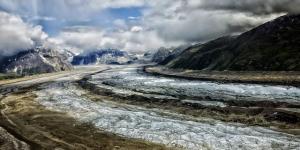
Tundras are geographical areas which are characterized by short growing seasons, harsh conditions and other limitations for the development of life. While these geographical areas constitute a biome, each tundra biome can have various ecosystems within it. They are all subject to certain types of landscape,...

Within the microscopic world of cells, a specialized compartment called the vacuole plays a vital role in the survival and reproduction of the cell. This membrane-bound sac acts as a storage unit, waste disposal center, and even a regulator of water balance within the cell.
In this article by thedailYECO,...
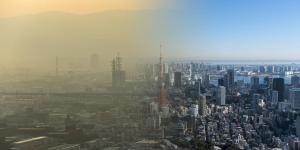
Air quality is a critical aspect of environmental health, impacting human well-being and ecosystems alike. Understanding the diverse forms of air pollution is essential for addressing its detrimental effects and safeguarding our collective future. Did you know that air pollution shortens lives by an average...

Our planet is teeming with life, from towering redwoods to microscopic bacteria. This incredible variety, known as biodiversity, is the foundation for a healthy and functioning Earth. It's not just about counting different species, but encompasses the vast genetic variation within species and the intricate...

Ever noticed clouds that seem to display faint rainbow colors? Those are iridescent clouds, and they offer a glimpse into a cool interaction between light and tiny water droplets or ice crystals in the sky. But unlike a rainbow, which requires rain and sunlight, iridescent clouds reveal their beauty...

Ferns are the living fossils of our planet, some of the first inhabitants of the Earth's green world. Often grouped with other non-flowering vascular plants like horsetails and club mosses, these ancient giants once ruled the plant kingdom millions of years ago. Their reign even contributed to the vast...

There are various different types of watercourse, meaning the way in which water flows through a channel of land. This manner in which the water flows is a stream, but this definition can be complicated by the fact there are many different types of channels through which water can flow. For example, we may...
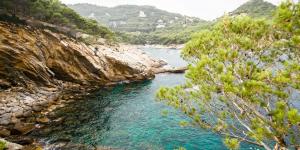
The coastline is a transition area between land and sea that encompasses a diversity of coastal ecosystems. These ecosystems are of great importance for both natural and human life. Coastlines vary greatly in term of geographical formation, ranging from sandy beaches to coral reefs. These dynamic environments...

The study of bioclimates is essential to understanding the distribution of climatic conditions on Earth. A bioclimate is the set of climatic conditions that determine the type of flora and fauna which can survive in a given geographical area. It is this geographical area which we can refer to as a bioclimatic...
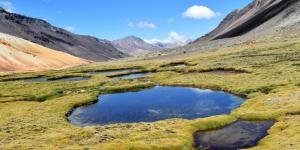
Lentic ecosystems are aquatic ecosystems associated with lakes and other slow-moving bodies of water. As they are a type of ecosystem, they are used to refer to how plant and animal life interacts with their environment as a community. In this case, it is a lentic environment. The types of life which...

Droughts are a growing concern worldwide, prompting scientists to explore ways to influence weather patterns. One such technique is cloud seeding, a process that aims to increase precipitation by manipulating the tiny particles within clouds. It might sound like something out of a science fiction film, but...

Cilia and flagella are specialized structures located on the surface of single-celled eukaryotic cells, as well as organisms such as bacteria and archaea. While they have differences in terms of structure and function, they are often confused with each other due to their similarities. In terms of structure,...

Plants may seem simple at first glance, but each part plays a crucial role in their survival and success. We can easily identify a tree's trunk or a flower's bloom, but delving deeper reveals a fascinating world of specialized structures. From the anchoring power of roots to the intricate dance of flowers...

Also known as globe lightning or orb lightning, ball lighting is a very poorly understood phenomenon. Since it is believed to be rare and unpredictable, study of this type of lightning can be difficult. As with all lightning, they are a form of electrical discharge which occur during thunderstorms. Conventional...

Air masses move differently in our Earth's atmosphere, with varying effects on the spaces beneath them. Specifically, they can influence weather patterns which can be disruptive or beneficial to both terrestrial and aquatic ecosystems. Cyclones are one of the most significant types of air mass which are...

Unlike animal cells, plant cells wear a sturdy exoskeleton - the cell wall! This essential structure is more than just a protective shell. It provides crucial support, safeguards the cell's interior, and even plays a role in regulating growth and nutrient exchange. Made primarily of cellulose, a complex...

Our planet thrives with life, a vibrant tapestry woven across diverse environments. From the sun-drenched stratosphere to the crushing depths of the ocean, a multitude of habitats provide the stage for this extraordinary biodiversity. While habitats seem infinitely varied, we can broadly classify them...
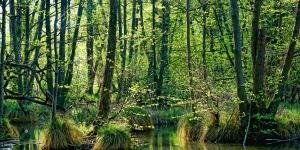
Swamps often get a bad rap – murky, mysterious, and maybe even a little monstrous. But look beyond the surface, and you'll discover a fascinating and vital ecosystem teeming with life. These unique wetlands are characterized by their waterlogged soils and the presence of standing water, creating a dynamic...

Our planet's oceans hold a hidden world, a vast realm shrouded in perpetual darkness. This region, known as the bathypelagic zone, plunges from 1,000 to 4,000 meters below the surface. Sunlight never reaches these depths, yet the bathypelagic zone teems with life. Extraordinary creatures, adapted to the...
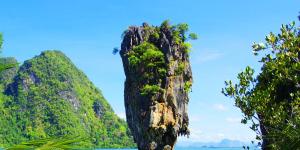
Stacks are prominent rock formations present in various geographical environments, providing prominent elements in the configuration of the natural landscape. While there are geological stacks present inland, we may me more familiar with sea stacks than land stacks since they are more revered for their...
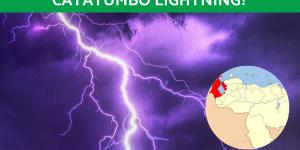
Catatumbo's Lightning is a fantastic display of nature's raw power. Often referred to as the "Everlasting Storm," this region in Venezuela experiences up to 40 lightning strikes every minute, which earn it a place in the Guinness Book of Records. However, there is a scientific explanation for this phenomenon....

Have you ever gazed out at a dramatic coastline and wondered about those landforms jutting into the sea or the deep indentations carving inland? These captivating features, capes and gulfs, represent opposite yet fascinating interactions between land and water.
This article from thedailyECO dives into the...
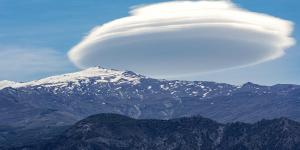
Have you ever gazed skyward and spotted a cloud that resembled a flying saucer or a giant contact lens? These captivating formations, known as lenticular clouds (or Altocumulus lenticularis for the science buffs), are a unique phenomenon often associated with mountainous regions. Their formation is...

For any gardening enthusiast, the word "bulb" is practically a household term. These fascinating underground structures play a vital role in countless plants, gracing our gardens with vibrant blooms and enriching our kitchens with delicious vegetables. From the lily to the onion, bulbs come in a surprising...

A protozoan is a single-celled organism than belongs to the kingdom Protista, although this is a somewhat archaic terminology. This is because protozoa are no longer considered animals, but are types of eukaryotic organisms. Despite this, they have behaviors which make it understandable why they were once...

Indicator species act like silent alarms, their presence or absence alerting scientists to potential air, water, and soil pollution. Their presence, absence, or abundance can reveal the environmental conditions of a particular habitat. They are essentially like a canary in a coal mine for the environment.
This...

The ocean depths hold some of the most enigmatic and unexplored landscapes on Earth. Among these mysteries lie the abyssal plains, vast underwater stretches cloaked in eternal darkness and immense pressure. These regions, far from the reach of sunlight, have long remained a source of fascination and intrigue...

A bay in geography is a natural coastal inlet of a large body of water such as a sea, ocean or lake that has a considerable area, but is generally smaller than that of a gulf. Such a coastal relief can be the result of various geological processes such as coastal erosion, glacial movement, volcanic activity...

Also known as ecological hotspots, biodiversity hotspots are geographic areas that stand out for hosting an extraordinary diversity of endemic species that is also facing significant threats to its survival. The term hotspots was coined by ecologist Dr. Norman Myers in 1988, a term born due to the crucial...

We continue our series at thedailyECO which describes cellular components by asking what does the rough endoplasmic reticulum do? The rough endoplasmic reticulum (RER) is an essential cellular organelle that plays a critical role in protein synthesis and molecule processing in eukaryotic cells. Its...

The centrosome is an essential organelle in animal cells which plays a crucial role in various cellular processes. While research has revealed to us its importance, the study of its function and structure is an ongoing process in the field of cellular biology. Centrosomes are composed of two centrioles,...

Nature is full of remarkable adaptations, and thermoregulation is no exception. This section will explore three fascinating ecogeographical principles: Bergmann's rule, Allen's rule, and Gloger's rule. These principles reveal intriguing patterns in how body size, appendages, and pigmentation influence...

Have you ever been caught outside during a sudden gust that nearly knocked you off your feet? Strong winds are more than just an inconvenience – they can pose a significant threat to both personal safety and property damage. Knowing how to identify strong winds and the associated risks allows you to take...
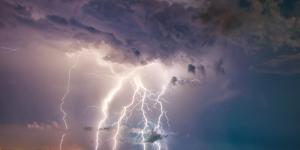
The Earth's atmosphere crackles with unseen energy. Atmospheric electrical phenomena refer to the natural electrical processes that occur within the Earth's atmosphere. This encompasses a wide range of electrical activity, from the dramatic discharges of lightning to the more subtle ongoing processes that...

Have you ever witnessed a vibrant rainbow arch across the sky, or perhaps seen an ethereal halo surrounding the sun? These captivating phenomena are known as photometeors. Photometeors are luminous atmospheric phenomena that arise from the interaction of sunlight or moonlight with atmospheric particles,...

Many of us think of dinosaurs when we think of fossils, these terrifying animals often most capturing the imagination. However, all types of life have been fossilized. These are no less important in terms of the evolutionary development of our planet. Plant fossils are the preserved remains of prehistoric...

Spores are small yet vital reproductive units created by a variety of organisms. Unlike seeds, which contain intricate structures like embryos and food reserves, spores are simpler in composition. Nevertheless, these tiny cells play a crucial role in the survival and spread of their parent organisms. By...

Hygrometers are devices used to measure the relative humidity of air or solid materials. Many of us associate them with monitoring or predicting the weather, but these instruments are used in a variety of applications. Such applications include indoor climate monitoring, agriculture, meteorology and the...

Club mosses, also known as lycopodia, are a fascinating group of ancient vascular plants. They're not true mosses, despite the name, but a separate lineage that dates back hundreds of millions of years. Club mosses are living examples of a very early plant design, thriving on Earth for much longer than flowering...

The endomembranous system is a set of membranes and structures in eukaryotic cells that collaborate in the modification, packaging and transport of lipids and proteins. The smooth endoplasmic reticulum (SER) is a network of tubular and membranous structures which are connected to each other. Their function...

Flowers are the vibrant crowns of the plant kingdom, captivating us with their diverse shapes, sizes, and colors. However, they serve a vital purpose that goes beyond aesthetics: reproduction. These magnificent exhibitions are nature's intricate factories, producing seeds for the following generation....

Our planet is a watery world, with aquatic biomes covering a vast majority of its surface. These biomes are classified based on factors like salinity (salt content) and water movement. Understanding aquatic ecosystems isn't just for curious minds. It's crucial for ensuring the health of our planet and...

Tree sap is a substance produced by plants which has different functions for the survival of the plant. Although we often associate it with trees, all vascular plants contain sap in some form. It is vital for the growth and development of a plant, but also for its continued functioning. Sap is composed...

Some parts of a flower are easier to identify than others, with the stalk and petals being two of the most obvious. Although they are related and sound similar, the sepals are less well known than petals, but they are important structures in angiosperm plants. Angiosperms are also known as flowering plants...

Did you know that a cooler Pacific Ocean can trigger flooding in Southeast Asia and droughts in the American Southwest? This paradoxical scenario is a consequence of La Niña, a climate phenomenon impacting weather patterns around the world. La Niña is one phase of the El Niño-Southern Oscillation (ENSO) cycle,...

Flowers dazzle us with their vibrant colors and sweet scents, but behind this beauty lies a complex reproductive system. At the heart of this system are carpels, the often-overlooked female reproductive organs of flowering plants. These modified leaves play a critical role in ensuring plant survival and...
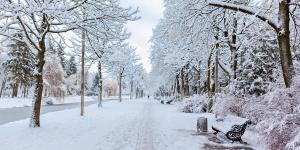
Cold waves are meteorological phenomena which are characterized by a sudden decrease in temperature that is then extended over a prolonged period of time. Also known as cold snaps or cold spells, there are certain characteristics common to all cold waves, but they can present differently depending on the...

Animals are classified by many different criteria, but the type of food they eat is one of the most significant. Piscivores are animals which feed primarily on fish, deriving their necessary nutrients mainly from this source. While being piscivorous is a commonality in these animals, they are an incredibly...
